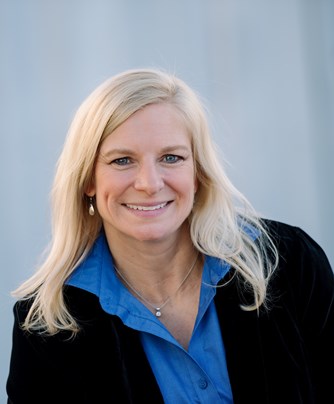16 June 2022 – When EnviroFlight announced the construction of its new R&D and corporate centre last year, the company emphasized that this would mean an expansion of its knowledge base for alternative uses of black soldier fly larvae (BSFL), in particular in animal health, animal nutrition, soil and plant nutrition, cosmetics and other product development.
The subsidiary of rendering giant, Darling Ingredients, which became the first commercial producer of BSFL in the US with the opening of its commercial plant in 2018, has now officially moved into its new home and has occupied the Innovation Centre in Raleigh, North Carolina since May of this year.
According to EnviroFlight’s president, Liz Koutsos, this adds a new chapter to the company’s long history of investment in BSFL R&D in a variety of areas, including genetics, immunology, nutrition and reproductive physiology, and reinforces its commitment to growing the insect agriculture industry and gaining US regulatory approvals for its BSFL ingredient.
To find out exactly what the new facility means for the company’s animal nutrition portfolio in particular, Feedinfo recently sat down with Dr. Koutsos and EnviroFlight’s VP of Business Development, Carrie Kuball.
[Feedinfo] Why build your business on BSFL? Why not other commercially reared insect species, like true crickets, yellow mealworms, etc.?
|
Liz Koutsos |
[Liz Koutsos] EnviroFlight uses black soldier fly larvae because of the safety, sustainability, and diversity they provide. The growth rate of BSFL is extremely fast, from hatch to processing in less than 20 days, which provides for tremendous opportunity to produce several “crops” a year compared to other protein sources. BSFL can also adapt to a variety of feed stocks, allowing us flexibility in our feeding programmes. In fact, by using different feeding and management programmes we can alter the nutrients of the BSFL finished ingredients, which is a neat concept for some customers. |
Finally, the remaining biomass from BSFL production, called frass, is unique to BSFL and has tremendous potential as a sustainable fertilizer and source of plant nutrition, as well as in animal feed applications.
[Feedinfo] So, let’s look a little closer at the use of BSFL in animal nutrition. Do you think the industry fully recognises the value of insect ingredients or do you think more education needs to be done?
[Carrie Kuball] There is always room for more education especially as we gain additional regulatory approvals. Most of our leadership team comes from the animal nutrition and pet food industry, which means we understand our customers' needs. This has allowed us to build strong relationships in livestock, poultry, aquaculture and pet food markets and help them understand the value and need for insects. At the time of opening our commercial plant in 2018, very few people knew what BSFL were or the role they could play in animal feed. Today, that has changed, and animal feed and pet food companies are actively including EnviroFlight products in their formulas.
[Feedinfo] Let’s talk a bit more about the value of BSFL as a feed ingredient then. What are some of the surprising discoveries your R&D efforts in BSFL have revealed?
[Liz Koutsos] We know that BSFL ingredients can provide, safe, wholesome sustainable sources of energy and protein for animals. What our research, and that of others, is now showing is that there are additional properties of BSFL ingredients that can provide even more value, in the form of lauric acid which is unique to BSFL and provides a sustainable source of this fatty acid.
Additionally, BSFL produce the largest number of antimicrobial peptides of any insect studied, and these compounds may support optimal gut health and immune response to typical challenges an animal may face on the farm or in the home.
Finally, chitin can act as a prebiotic and also support optimal gut health. We are really excited to be defining and amplifying those properties, again to provide enhanced value to our customers and the animals that they feed.
[Feedinfo] So how exactly will your new R&D facility help you realise your growth ambitions in animal nutrition?
|
[Carrie Kuball] Animal nutrition is one of our core focus areas at our Innovation Centre. We partner with customers, universities, and contract research organizations to run many types of animal feed trials using our BSFL ingredients (EnviroBug, EnviroMeal, EnviroOil, and EnviroFeed). We have published work in dogs, cats, poultry, aquaculture and swine, demonstrating the value and application of our ingredients. And we continue to expand upon this work in commercial trials that provide specific solutions to our customers. Our new Innovation Centre also allows our scientists and our sales and marketing team to interact more closely to align our projects even further. |
|
[Feedinfo] From your pilot plant in 2009 to your first commercial one, what have been the key challenges encountered in growing the business? What continues to be your main challenge(s)?
[Carrie Kuball] Anytime a concept is taken from pilot plant to commercial scale, there are challenges, especially with a biological system. When we first opened the commercial plant, we had very few AAFCO (Association of American Feed Control Officials) ingredient approvals, so the customer base we could sell to was limited. This allowed us time to refine our commercial production systems, while our R&D efforts supported additional ingredient approvals. Plus, our pilot plant was very manual. The commercial plant is very automated, so fine tuning the automation took a bit of time as well.
In our commercial operation, we are raising billions of insects under one roof at any given time. In order to scale up to this density from our pilot plant scale, we had to put in tremendous time and effort into our engineering, automation and environmental controls. And of course, each time you design a new piece of equipment, you learn and improve upon the last. Keep in mind, there is no clearly defined blueprint for the perfect insect rearing facility. So, each company that is working to commercialise insect production is creating systems that work for their applications, both inputs and outputs.
We’ve also put in significant resources to advance regulatory approvals. When we opened our commercial plant, BSFL larvae and meal were only approved for salmonids (trout and salmon). We have worked very hard to demonstrate the safety and efficacy of our ingredients, resulting in many more approvals including for poultry, dogs and pigs and opening up approvals for BSFL oil as well. This is a long-term effort and without it, the industry cannot expand.
Finally, BSFL has tremendous untapped potential to provide sustainable nutrition and more. Our new Innovation Centre allows us to accelerate our focus on understanding and harnessing the power of this insect to help feed the growing global population.
[Feedinfo] So clearly there is more to explore here in terms of BSFL R&D. What can we expect from EnviroFlight and BSFL R&D in the near future?
[Liz Koutsos] There is so much more to learn about BSFL. This industry is in its infancy; we are like the poultry farmers of the 1950’s. Luckily, with the short lifecycle of BSFL, we can make progress very rapidly. We will continue to lead the industry in R&D efforts across all aspects of BSFL genetics, biology, nutrition and animal feed application.
One area that we are incredibly excited about is our genetics programme. Our team has been developing the tools to understand the genetic potential of these amazing insects and leveraging those tools to develop selected populations of BSFL that can improve performance, enhance breeding success, provide improved nutrition. I think you will see big things from our SuperFly team in the future!
[Feedinfo] Lastly, how does this investment in EnviroFlight R&D support Darling Ingredients’ overall business strategy?
[Liz Koutsos] Darling Ingredients’ purpose has been to repurpose, and it’s been Darling’s mission for 140 years. We recycle animal-based co-products and other natural materials into value-added ingredients used to create many of the products people use every day. Darling is continually investing in innovation. The EnviroFlight Innovation Centre is just one more way that Darling leads green innovation and ag tech platforms globally.
Published in association with EnviroFlight


 Carrie Kuball
Carrie Kuball

